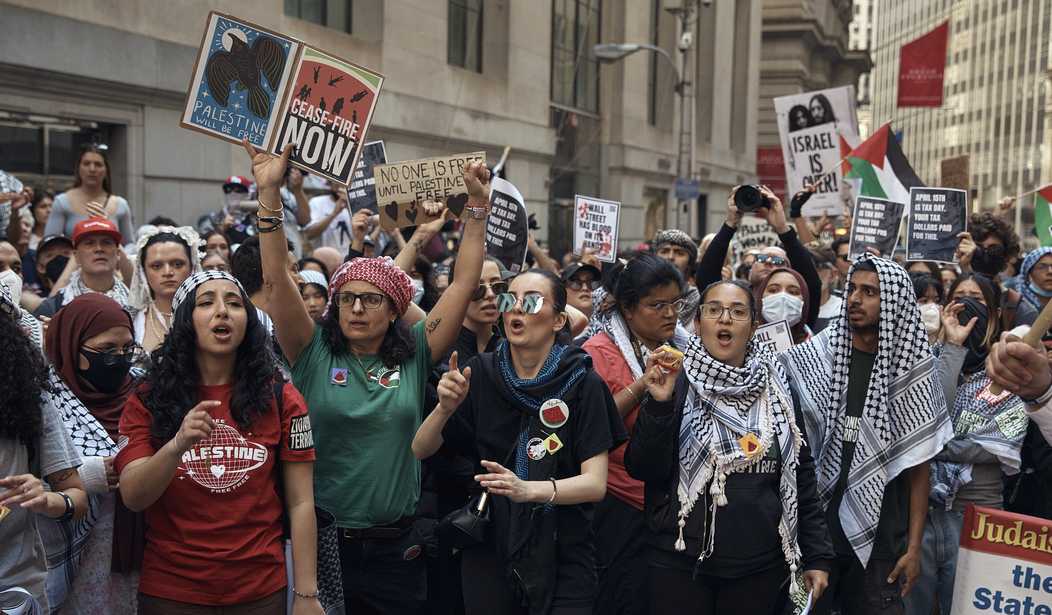The anti-Israel, pro-Hamas protests at colleges and universities that are still ongoing have cost schools, local police forces, local businesses, and other related entities more than $1.51 billion in nationwide costs, according to a comprehensive study performed by the Middle East Forum.
Here is a breakdown of the total costs. Among the higher expenses were $33.1 million in property damage, $97.3 million in law enforcement costs, $1.19 billion in lost business revenue, and $178.5 million in lost wages.
What can't be tabulated is the emotional damage to students, especially Jewish students, the disruption of the learning process, and fear from radical, pro-Hamas protesters who threatened physical harm against pro-Israeli students.
Is there any way to recover those costs?
In the same way that the government goes after organized crime families using the Racketeer Influenced and Corrupt Organizations Act, or RICO, schools, businesses, and police forces can go after several pro-Hamas organizations, including Students for Justice in Palestine (SJP), that U.S. intelligence claims receive substantial funds from Hamas and Iran.
"The most viable civil RICO plaintiffs include businesses directly targeted by coordinated boycotts, blockades, or vandalism campaigns; property owners whose buildings suffered repeated damage from organized protest activities; and institutions (like universities) that incurred substantial security costs and property damage from building occupations," the MEF report states.
SJP cannot plead poverty. One look at the organized, disciplined protests that erupted across the country in 2023-24, the tents that appeared out of nowhere, the food, the legal assistance — everything from PA systems to the port-o-johns was paid for by someone.
And no one is going to convince me it was a bunch of kids holding bake sales that pulled all of it off.
Those companies and schools seeking redress for costs associated with the protests have plenty of targets.
The pattern of economic harm differs significantly from historical precedents, with these protests characterized by extended duration, as most historical riots lasted days or weeks while these protests have continued for months with little sign of abating. Geographic dispersion is another distinguishing feature, as rather than concentrating in a single city, these protests have simultaneously affected dozens of metropolitan areas and campuses. The targeted disruption approach means many protest actions have explicitly targeted Jewish businesses or pro-Israel institutions, amplifying economic impacts on specific communities.
This historical context underscores the unique economic challenge posed by these protests. While individual incidents may be less destructive than major riots, their cumulative and targeted impact has created economic harm comparable to much larger civil disturbances.
In fact, there is no comparison with any other protest in U.S. history. According to the study, the George Floyd protests came the closest to matching the ongoing anti-Israeli protests, costing $3-4 billion in property damage (most of it insured) and a billion dollars in law enforcement costs. But they didn't last as long, nor did they cause the kind of emotional damage to students and faculty who were attacked simply for being Jewish.
One roadblock to using civil RICO to go after protest organizers is the high bar that a plaintiff must leap to be successful.
The civil RICO framework requires plaintiffs to prove four key elements. First is the “person” element: the defendant(s) must be “persons” (individuals or organizations) capable of being held legally accountable. Second is the “enterprise” element: the defendant(s) conducted or participated in an “enterprise”—a structured association with a common purpose. Third is the “pattern of racketeering activity” element: the defendants engaged in at least two qualifying criminal acts (predicates) within a 10-year period, showing relatedness and continuity. Fourth is the “direct causation” element: the plaintiff’s business or property was injured “by reason of” the RICO violation.
The pro-Hamas protesters brazenly use our Constitution against us at every turn, laughing at us all the time. It may take a little work, but taking down the pro-Hamas thugs can be done.










